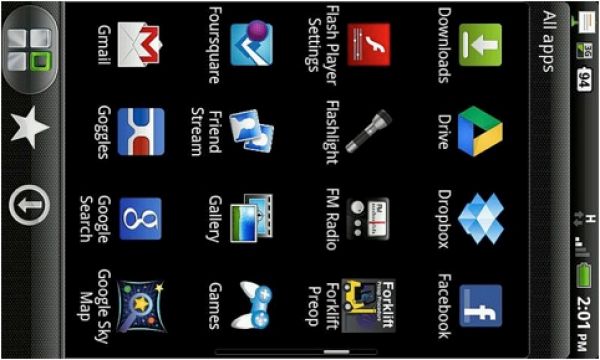Phone apps and DRTV – A match made in heaven

Adverts are a big area of business; generating millions of pounds in sales and revenue for companies who want to make their products and services stand out from the crowd. In today’s competitive and cutthroat marketplace, modern businesses have to conjure up increasingly creative, exciting and innovative ways to generate new sales. Well, thanks to continuing technological innovations — and in particular the smartphone — the relationship between apps and DRTV (Direct Response TV) has the potential to be a deeper and burgeoning one.
An Inevitable Marriage
There’s no question, however, that DRTV fits with a certain hand-in-glove ease and comfort when it comes to pairing up with new tools and technologies, and is potentially one of the most malleable in terms of its ability to adapt to new and interactive marketing strategies.
There is certain inevitability in the ways in which mobile and DRTV technology can interact innovatively with each other. And because DRTV can naturally incorporate “direct touch” applications such as QR codes, location-based apps and specific text message responses, there is plenty of scope, leverage and appeal to make such technological partnerships a success.
Exploring The Possibilities
One example is a new ad-interacting mobile app called WiO, which has been launched in America on various TV networks across fifty brands. Consumers who have downloaded and activated the app, whilst watching the relevant commercial, displaying the WiO logo, hold up their smartphones to ‘listen’ to the audio, which in turn connects them to a page detailing the product being advertised. They can then order it immediately via the app or bookmark it to use later.
The merging of the smartphone, business and app technology streams has unquestionably the potential to enhance and multiply sales and makes it easier for customers to engage with the product itself. In this respect, it creates a more binding, personal and interactive relationship, making the customer part of the product and the overall experience rather than a more direct and cold hard sell approach. Even better, you don’t need to remember phone numbers or URLs as the app directs you automatically and immediately to the contact source.
Shazam is an app that identifies “acoustic fingerprints” to name songs playing on the radio, and it too has dipped its technical toe into DRTV waters by exploiting the potential and opportunities of brand marketing through both the Direct Response avenue and traditional TV. It has in the region of 250 million subscribers who use the app to scan, or tag, an ad which displays the Shazam logo, generating further advertising content and allowing them to interact with the brand.
And to plunge briefly into the statistical world of percentages, a study recently carried out for Shazam revealed that 68 per cent of people who tagged TV ads went on to engage with brands, whilst 55 per cent used perhaps the best selling technique and recommendation of all — word of mouth — to tell others about it, compared to approximately a quarter of people who didn’t tag the ads.
Pockets Of Resistance
In the interests of balance it has to be pointed out that, as with the application and integration of most technologies, the confluence of Smartphone apps and DRTV potential hasn’t been universally greeted with enthusiasm. And whilst some of the naysayers aren’t ruling out its brand and marketing possibilities altogether, their main concerns stem from the fact that many people who watch DRTV spots invariably don’t know what a QR code or an app is, even less what to do with it.
But the champions of the combination of these technologies see the potential of the apps as mobile order trackers as it’s most intriguing and perhaps one of the keys ways to harness its potential — orders placed using the aforementioned WiO, for example, allows marketers to trace exactly where the order came from.
5 Reasons Why The Smartphone/DRTV Combo Can’t Fail
1. Both mediums primarily centre on generating some form of consumer response. Adverts and short-form campaigns concentrate on generating a quick customer response. Mobiles encourage smartphone users to click hyperlinks, visit landing pages, and respond to messages.
2. Because mobiles provide a direct connection to the web, it precludes the hassle of typing in a URL – rather you just click on the URL and peruse the mobile site, and decide whether or not you want to part with your cash and make a purchase. Ahh, the wonders of Android, Blackberry and iPhone.
3. DRTV slots and mobiles both hold the capacity to track customer participation and reaction. Marketers can use analytics through mobiles to check if customers are responding to their campaigns or making purchases — or not. DRTV and mobile campaigns can both be adjusted ad hoc to maximise the best possible response.
4. Mobiles are 24/7 tools — omnipresent and constantly usable. DRTV adverts are assigned specific times for broadcast. Mobiles can therefore plug those gaps to be available when the customer needs them without the need to be sat in front of the TV or laptop.
5. We unquestionably live in a techno-savvy age, so it’s only natural to harness the potential of social media in all its multifarious forms. Facebook, Twitter and other social platforms allow DRTV campaigns to be presented via yet another means, opening up furthermore advertising opportunities as people busy themselves furiously with their smartphones on the bus or train.
On the basis of these facts, how can you possibly argue against the fact that merging of mobiles and DRTV advertising is a match made in heaven? What do you think? Share your comments below.
Phones Review like to say a big thanks to Gavin Harvey is a personal trainer during the day and enthusiastic blogger in the evenings, who writes for Space City.

Live Comment
Your email address will not be published.